Solar Impulse breaks solo record
- Published
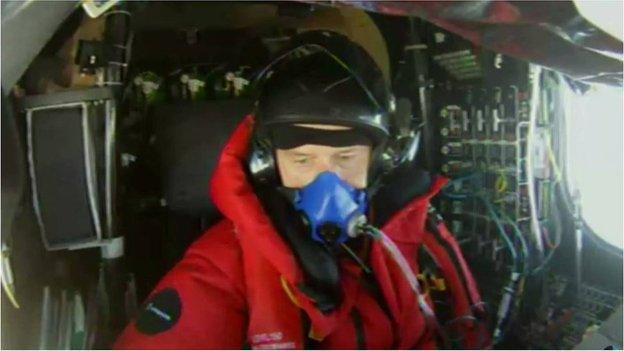
Andre Borschberg must cross a cold weather front before reaching Hawaii
The Solar Impulse plane has broken the record for the longest non-stop solo flight without refuelling.
The milestone was achieved 76 hours into the latest leg of its attempt to circumnavigate the globe.
Pilot Andre Borschberg is making steady progress as he attempts the first solar-powered crossing of the Pacific.
After leaving Nagoya, Japan, early on Monday (local time), he has now passed Midway Island and is heading towards his destination of Kalaeloa, Hawaii.
At 76 hours into the journey, he broke the record for the longest ever non-stop solo flight without refuelling.
The previous mark was set by the American Steve Fossett in 2006, external.
His jet-powered Virgin GlobalFlyer vehicle completed a full circumnavigation of the world in that time, travelling more than 41,000km.
In contrast, Mr Borschberg's Solar Impulse plane, external, which carries no fuel at all, had gone "only" some 5,500km in its 76 hours of flight.
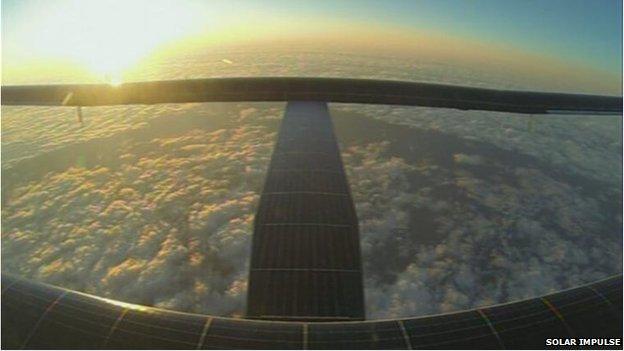
The top surfaces of Solar Impulse are covered with 17,000 photovoltaic cells
Wednesday saw the Swiss pilot fly a holding pattern to time his encounter with an upcoming cold front to the optimum.
This will occur on Thursday, and Mr Borschberg needs good sun conditions to get his aircraft up and over the weather system so that he can navigate the final stretch into Kalaeloa on Friday.
Precisely when this historic landing will occur is somewhat uncertain.
Solar Impulse has some quite strict constraints to ensure the 72m-wingspan vehicle can put its wheels down safely.
These include a maximum cross wind of no more than four knots and a maximum overall wind speed of no more than 10 knots.
If it is too windy at ground level, Mr Borschberg will be instructed to circle overhead until the conditions calm down.
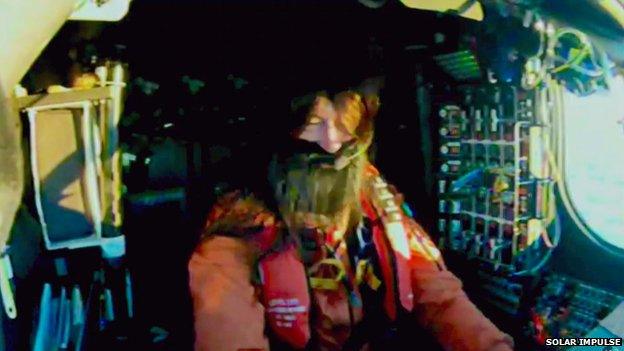
In good spirits: Andre Borschberg puts on his wig and fake beard
By then, he will probably have spent more than 120 hours in the air.
So far, he has coped remarkably well on very little sleep, and on Wednesday even made time to joke around in his cockpit by donning a wig and fake beard.
When he gets to Hawaii, he will be met by fellow adventurer and business partner, Bertrand Piccard.
The pair have shared the flying duties in the single-seater plane's round-the-world quest, which began in Abu Dhabi, UAE, back in March.
It is Mr Piccard – who famously made the first non-stop, global circumnavigation in a balloon – who will fly the next leg from Kalaeloa to Phoenix, Arizona.
That is not quite as far as the current stint, but it still likely to take four days and nights.
From Phoenix, Solar Impulse will head for New York and an Atlantic crossing that would eventually see the plane return to Abu Dhabi.
Borschberg and Piccard have used the various stopovers on their round-the-world journey to carry a campaigning message to local people on the topic of clean technologies, external.
Their Solar Impulse plane is not intended to be a vision of the future of aviation. Rather, it is supposed to be a demonstration of the current capabilities of solar power in general.
The vehicle is covered in 17,000 photovoltaic cells. These either power the vehicle's electric motors directly, or charge its lithium-ion batteries, which sustain the plane during the night hours.



LEG 1: 9 March. Abu Dhabi (UAE) to Muscat (Oman) - 772km; in 13 hours and 1 minute
LEG 2: 10 March. Muscat (Oman) to Ahmedabad (India) - 1,593km; in 15 hours and 20 minutes
LEG 3: 18 March. Ahmedabad (India) to Varanasi (India) - 1,170km; in 13 hours and 15 minutes
LEG 4: 18 March. Varanasi (India) to Mandalay (Myanmar) - 1,536km; in 13 hours and 29 minutes
LEG 5: 29 March. Mandalay (Myanmar) to Chongqing (China) - 1,450km; in 20 hours and 29 minutes
LEG 6: 21 April. Chongqing (China) to Nanjing (China) - 1,241km; in 17 hours and 22 minutes
LEG 7: 30 May. Nanjing (China) to Nagoya (Japan) - 2,852km; in 44 hours and 9 minutes
Leg 8: 28 June. Nagoya (Japan) to Kalaeloa, Hawaii (USA) - 8,000km; 118 hours (estimated)

- Published30 June 2015
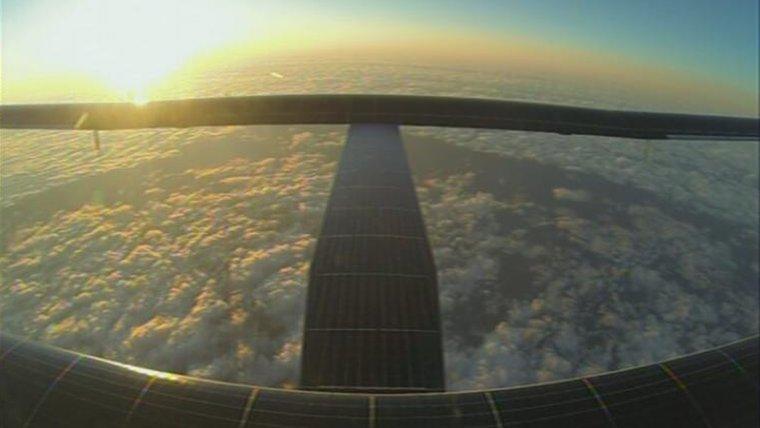
- Published29 June 2015

- Published3 June 2015

- Published1 June 2015
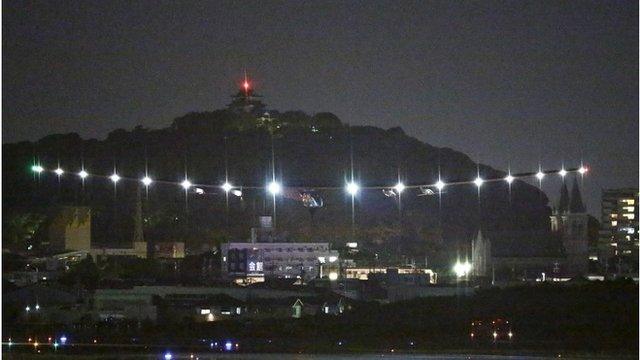
- Published30 May 2015

- Published13 May 2015
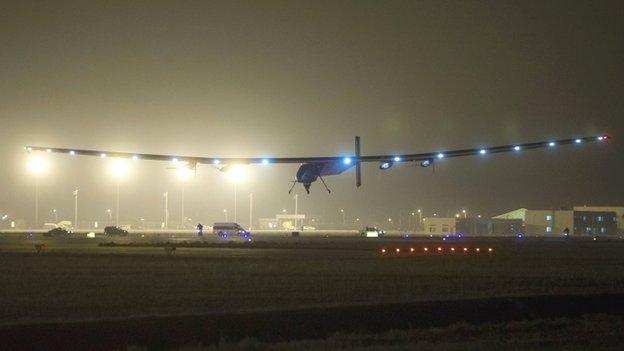
- Published25 May 2015